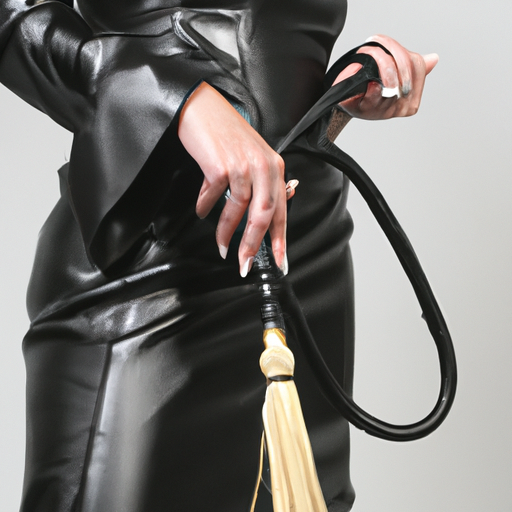japanese dominatrix culture, also known as ‘femdom’ or ‘mistress culture,’ is a fascinating and often misunderstood aspect of Japanese society. Common misconceptions surrounding this unique subculture can lead to misconstrued judgments and biased opinions. In this blog post, we will address some of these misconceptions and shed light on the reality of Japanese dominatrix culture.

Misconception #1: Japanese dominatrix culture is synonymous with traditional BDSM practices.
One of the most prevalent misconceptions is that Japanese dominatrix culture is the same as traditional BDSM practices. While there may be some overlap, it is essential to understand that Japanese dominatrix culture has its distinct characteristics. In Japan, dominatrixes are commonly referred to as ‘mistresses’ and are respected as powerful women who dominate submissive men. The focus is not solely on physical pain or sadomasochism but encompasses psychological domination, role-playing, and power exchange.
Misconception #2: Japanese dominatrix culture promotes violence and abuse.
Another common misconception is that Japanese dominatrix culture promotes violence and abuse. It is crucial to differentiate between consensual role-playing and genuine harm. In Japanese dominatrix culture, the emphasis is on trust, consent, and clear boundaries. The relationship between a dominatrix and her submissive client is built on mutual respect and understanding. It is essential to recognize that any form of abuse or non-consensual activity is not representative of the culture as a whole.
Misconception #3: Japanese dominatrix culture objectifies women.
Some individuals mistakenly believe that Japanese dominatrix culture objectifies women, reducing them to mere objects of sexual desire. However, within this culture, women are empowered and celebrated for their strength and dominance. Dominatrixes are highly skilled professionals who possess a deep understanding of their clients’ desires and provide a safe space for exploration and self-discovery. It is important to acknowledge that these women choose this profession willingly and are not victims of objectification.
Misconception #4: Japanese dominatrix culture is illegal or frowned upon in Japan.
Contrary to popular belief, Japanese dominatrix culture is not illegal in Japan. While some aspects of the culture may be considered taboo or unconventional, it is not inherently frowned upon. Like any other subculture, it exists within the broader spectrum of Japanese society. Many dominatrixes operate legally as professionals, ensuring that their practices adhere to the principles of consent and safety.
Misconception #5: Japanese dominatrix culture perpetuates gender inequality.
One misconception surrounding Japanese dominatrix culture is that it perpetuates gender inequality, reinforcing traditional gender roles. However, this subculture challenges traditional notions of gender and power dynamics. It provides a space for individuals to explore and express their desires, regardless of societal expectations. The dominatrixes in Japanese culture are not subservient to men but rather embrace their power and assertiveness.
In conclusion, Japanese dominatrix culture is often misunderstood due to various misconceptions. It is essential to approach this subculture with an open mind and a willingness to challenge preconceived notions. By understanding the reality of Japanese dominatrix culture, we can appreciate the nuances, complexities, and positive aspects it offers. Let us strive for a more inclusive and respectful perspective, embracing the diversity that exists within our society. Click here to find out more.
What are some common misconceptions or stereotypes about femdom boots?
femdom boots: Debunking Misconceptions and Stereotypes
When it comes to the world of fetish fashion, femdom boots have often been misunderstood and subjected to numerous misconceptions and stereotypes. These powerful and empowering pieces of footwear have a rich history and significance within the BDSM community. In this blog post, we aim to explore some of the common misconceptions surrounding femdom boots and shed light on their true essence.
Misconception 1: Femdom boots are solely for men who enjoy submission.
One of the most prevalent misconceptions about femdom boots is that they are exclusively designed for men who enjoy being submissive. However, this assumption is far from the truth. Femdom boots are not limited to any specific gender or sexual orientation. They are a symbol of empowerment and dominance, representing the desire for control and authority. Anyone, regardless of their gender or sexual preferences, can embrace the allure of femdom boots.
Misconception 2: Wearing femdom boots implies a lack of respect for women.
Another common misconception is that individuals who wear femdom boots lack respect for women. This notion stems from a misunderstanding of power dynamics within BDSM relationships. In reality, the desire to wear femdom boots is not fueled by disrespect but rather by a mutual understanding and consensual agreement between partners. It is important to remember that BDSM practices are based on trust, communication, and respect.
Misconception 3: Femdom boots promote violence and abuse.
One of the most damaging stereotypes surrounding femdom boots is the belief that they promote violence and abuse. This misconception arises from a lack of understanding about the difference between consensual BDSM practices and non-consensual violence. It is crucial to emphasize that the BDSM community operates under a framework of safe, sane, and consensual practices. The use of femdom boots, like any other BDSM accessory, is rooted in trust, consent, and the exploration of power dynamics within a controlled environment.
Misconception 4: Femdom boots are inherently degrading.
Another prevalent misunderstanding is that wearing femdom boots is degrading for the individual wearing them. However, it is essential to recognize that perceptions of degradation vary widely among individuals. For many, wearing femdom boots is an empowering experience that allows them to explore their dominant side and embrace their sexuality. It is crucial to respect the personal choices and preferences of individuals, as long as they are consensual and do not harm anyone involved.
Misconception 5: Femdom boots are only worn in the bedroom.
Contrary to popular belief, femdom boots are not exclusively reserved for the bedroom. Many members of the BDSM community incorporate femdom boots into their everyday fashion choices. These boots can be seen as a form of self-expression and a way to assert one’s personal style and identity. Femdom boots have become a staple in fetish fashion, often paired with alternative or avant-garde clothing, making a bold statement and challenging societal norms.
In conclusion, femdom boots have long been subjected to misconceptions and stereotypes. It is essential to approach these misconceptions with an open mind and a willingness to understand the true essence and significance of these boots within the BDSM community. By debunking these misconceptions, we can foster a more inclusive and accepting environment that celebrates diverse forms of self-expression and sexual exploration.
